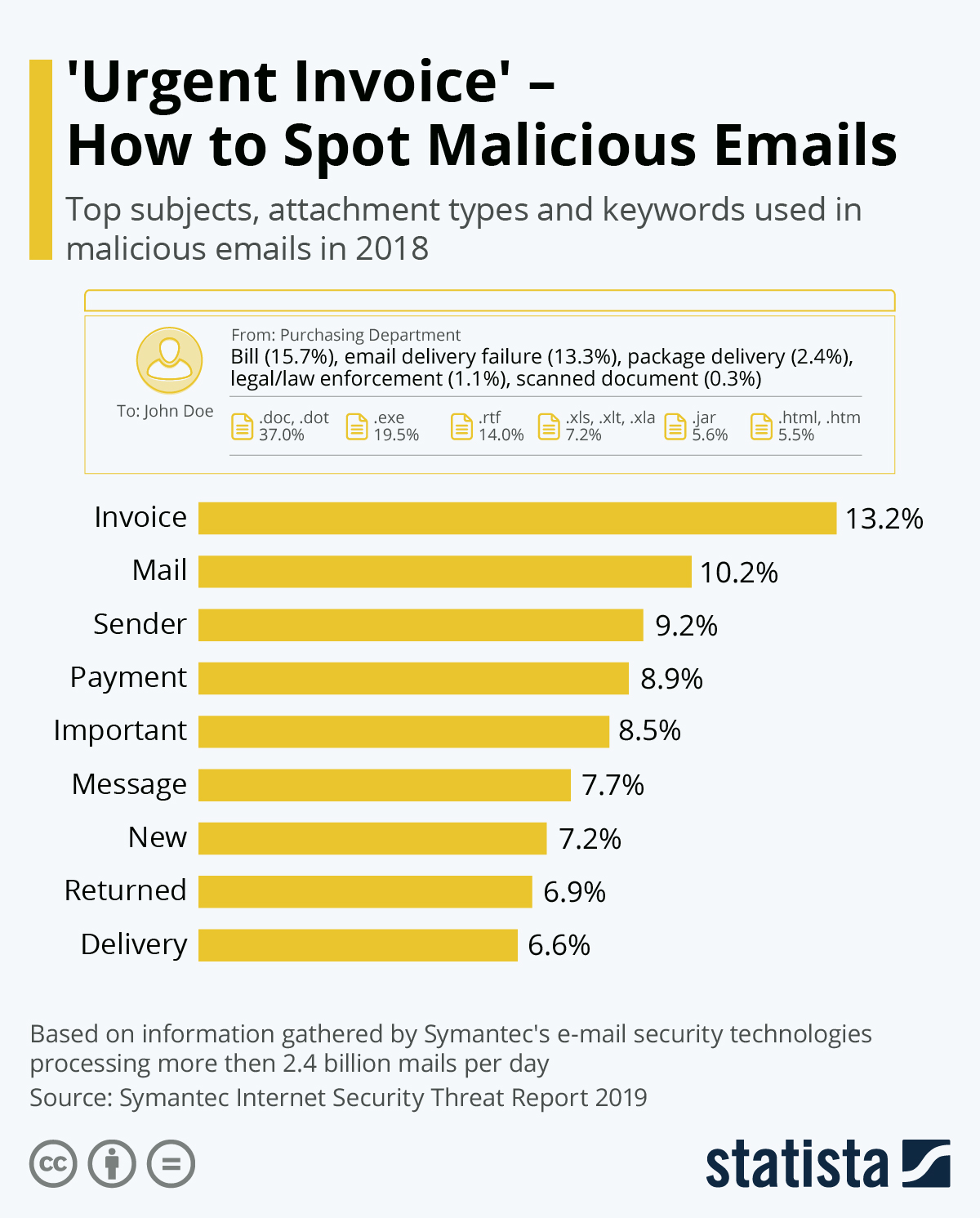How to Spot Phishing Emails
According to the 2019 Internet Security Threat Report published by Symantec, mobile ransomware infections increased by 36%, web attacks on endpoints increased by 56%, and 1 in 10 URLs in the survey was deemed malicious. The report found that malicious URLs were used less often as the primary mode of infection and in their place, malicious attachments increased in use. Overall, 48% of malicious email attachments were office files such as .doc, .dot, .rtf, .xls, .xlt and .xia.
The report also found that employees of small organizations were more likely to fall victim to email threats including spam, phishing, and email malware than employees of larger organizations. For organizations small and large, education around current malicious email trends can be the best line of defense along with properly managed threat detection and anti-malware software. Organizations should train employees not to open suspicious files or click on suspicious links. Knowing what types of email subject lines are commonly associated with current threats can help in deciding which emails are suspicious.
The data in the report is extensive, to simplify the findings we’ve provided a quick summary of the most common malicious email subject line keywords taken from the report and compiled by Statista.




